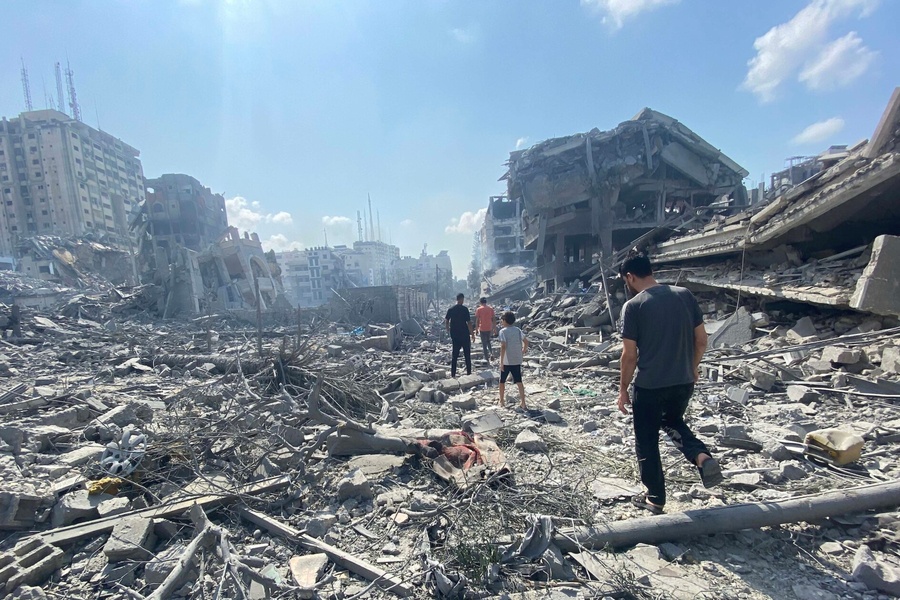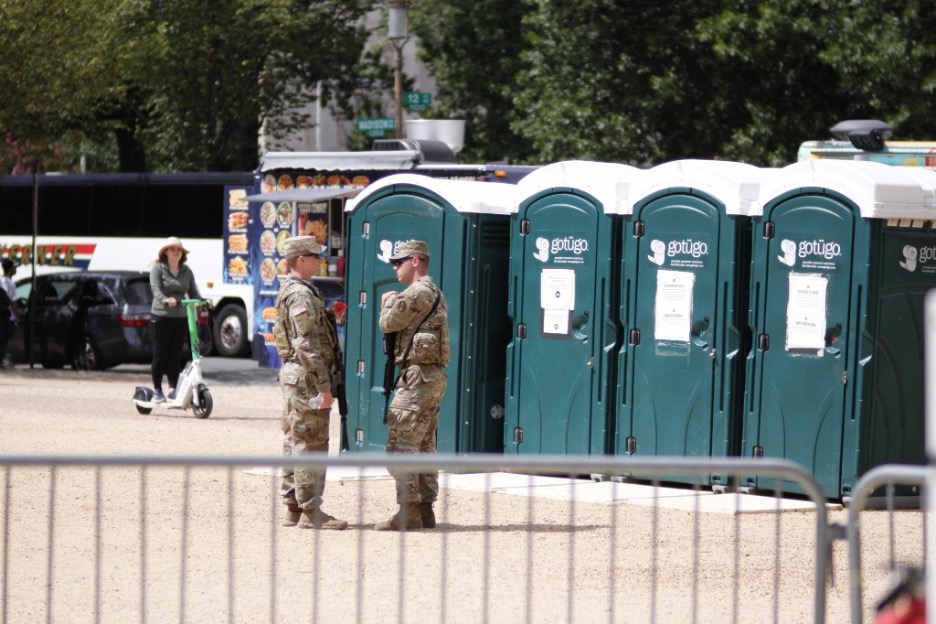Argument Preview: Salahi v. Obama
Larkin Reynolds, a Brookings legal fellow who is working with Bobby and me on the next edition of our habeas report, offers a preview of the next big D.C. Circuit case:
The first Guantánamo case scheduled for oral argument at the D.C. Circuit this fall is Salahi v. Obama, which is on the calendar for this Friday, September 17.
Published by The Lawfare Institute
in Cooperation With

Larkin Reynolds, a Brookings legal fellow who is working with Bobby and me on the next edition of our habeas report, offers a preview of the next big D.C. Circuit case:
The first Guantánamo case scheduled for oral argument at the D.C. Circuit this fall is Salahi v. Obama, which is on the calendar for this Friday, September 17. The government’s brief tees up for the Court one big question about who bears the burden of proving whether or not a detainee quit Al Qaeda where there is no dispute that he once joined. It also raises some less involved but still important questions about the burden of proof and how contextually the courts should view evidence.
Mohammedou Ould Salahi is a Mauritanian national taken into custody in 2001 and transported to Guantánamo Bay, Cuba in 2002. Salahi concedes having sworn an oath of loyalty (bayat) to Al Qaeda in 1991, but he also claims to have disassociated from the organization the following year. Judge James Robertson, who decided the case at the district court level in favor of Salahi, found that he had since then provided only “sporadic support to members of al-Qaida.” These acts of support included transferring money for an Al Qaeda leader, hosting some of the September 11 hijackers at his house, and associating with other Al Qaeda figures. But Judge Robertson was not convinced that the government’s evidence showed that Salahi was either still “part of” Al Qaeda or that he “purposefully and materially supported such forces in hostilities against U.S. Coalition partners” (emphasis in original). Rather, he found that the Al Qaeda that Salahi joined was “very different from” the Al Qaeda that launched the September 11 attacks, and that Salahi’s subsequent connections to the organization made him at most a “sympathizer” who had provided “some support”—neither of which made him detainable under the AUMF.
On appeal, the government is essentially making three arguments. In the first and most important, it urges that Salahi’s sworn oath of loyalty to Al Qaeda “giv[es] the United States reason to presume that the individual will be true to that oath.” As such, it is a lens through which all of his other activities should be viewed even though it occurred long before the attacks and the contacts succeeding it were sporadic. Specifically, because Salahi testified that “bayat is not for a specific event, but . . . for an overall cause,” the oath creates a “strong presumption” that Salahi was “part of” Al Qaeda and thus detainable under the AUMF. The government argues, in essence, that the burden falls on Salahi to prove that he withdrew from the group, and that his continued ties to it up nearly through the time of his capture make any such claim untenable. In particular, the government urges the court to view these events not as single pieces of evidence taken in isolation, as the district court viewed them, but as a whole and principally in light of the “enduring” loyalty oath from which Salahi bore the burden of withdrawal.
Judge Robertson treated this argument brusquely at the district court, as an import from criminal conspiracy law which he said had “no place” in this sort of litigation; however, the government may fare better on appeal, particularly in the wake of the Circuit’s Al Adahi decision, which emphatically held that the district court there erred in failing "to appreciate conditional probability analysis" and was "clearly" wrong to treat each piece of evidence in isolation.
The government’s second argument is that Judge Robertson adopted too high an evidentiary standard. While notionally using a preponderance of the evidence standard, the government contends, he affirmatively adopted a position of “skepticism” towards the government’s evidence: “It is only fair to the petitioner, however—and, considering the government's built-in advantage, not unfair to the government—to view the government's showing with something like skepticism, drawing only such inferences as are compelled by the quality of the evidence.” This language, the government claims, signaled that the court was actually using not a preponderance standard but rather a standard that approaches clear and convincing evidence, which the D.C. Circuit expressly rejected in Al Bihani.
The last of the government’s arguments on appeal is a plea for thoroughness. The government argues that the district court failed to adequately consider nearly 70 of Salahi’s inculpatory statements—that it simply disregarded them. If the appellate court does not reverse outright, the government has asked it to reverse and remand with instructions for specific findings as to those statements.
Salahi's lawyers respond to these arguments with a full defense of Judge Robertson's analysis. As to the fact of Salahi's training at Al Farouq in the early 1990s, they direct the court to his departure in 1992 and the fact that he never returned. The oath of loyalty was, according to Salahi, only “for the limited purpose of fighting against communism,” and his later contacts with individuals known to be Al Qaeda members were irregular and fleeting. Salahi's lawyers also emphasize that the district court’s findings—even those concerning whether Salahi was “part of” Al Qaeda—are factual findings and thus entitled to a deferential standard of review.
The panel hearing the case includes Chief Judge David Sentelle and Judges David Tatel and Janice Rogers Brown. It may prove a tough one for Salahi. Judge Brown has staked out a particularly tough line in prior cases. And Judge Sentelle authored a panel opinion this summer affirming a lower court's denial of a petition in a case that overlaps on an important point with the present one.
In June, the D.C. Circuit released its opinion in Awad v. Obama, a case that clarified to some extent the interplay between being “part of” Al Qaeda and operating within its “command structure.” Without much elaboration, Chief Judge Sentelle wrote for the court that the determination of whether an individual is operating within or under command structure (“whether he receives and executes orders or directions”) is sufficient to find an individual “part of” Al Qaeda, but not necessary. Judge Robertson’s finding in Salahi that Salahi’s activities did not meet the “command structure” threshold was the crux of Salahi's success at the district court level; now the Circuit panel will be obliged to flesh out the “part of” standard in more detail, especially as regards Salahi’s actions that “supported” Al Qaeda but which the district court found he had not been “tasked” to do.
Not long after Awad, Judge Tatel authored Barhoumi v. Obama, a case affirming the district court’s conclusion that the petitioner had indeed been “part of” an Al Qaeda-associated militia. The district court had relied largely upon several diary entries (entries challenged as unreliable hearsay) to conclude that the petitioner had stayed in known Al Qaeda guesthouses, traveled with Abu Zubaydah, and thus more likely than not had become “part of” Zubaydah’s militia.
All three judges, in other words, have previously upheld detentions involving facts that, at least in some respects, are less compelling than those present here.
Benjamin Wittes is editor in chief of Lawfare and a Senior Fellow in Governance Studies at the Brookings Institution. He is the author of several books.





